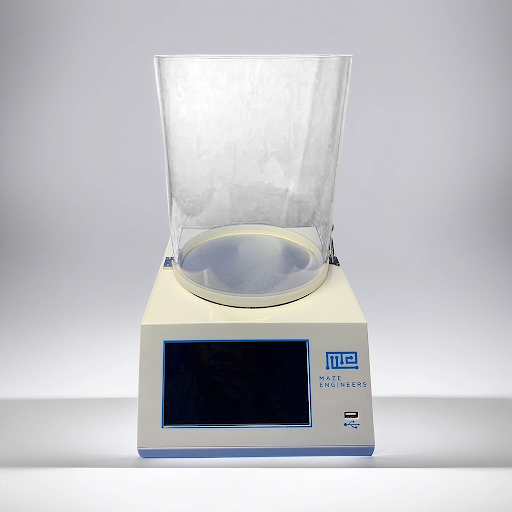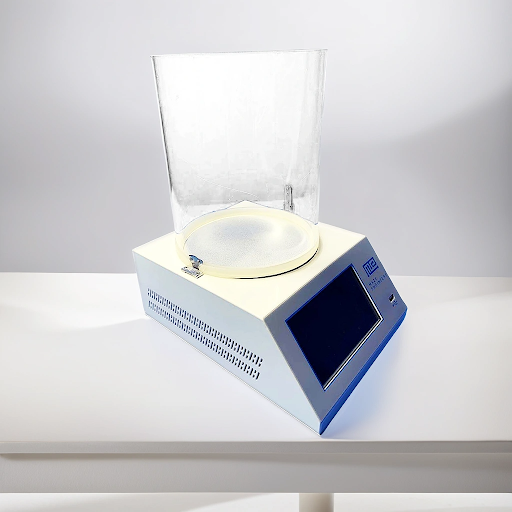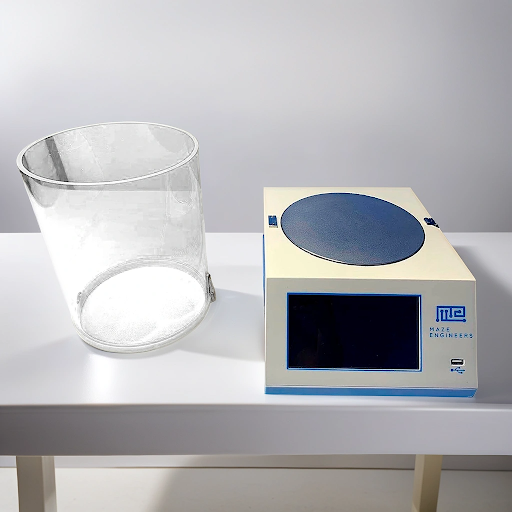Description
The Hot/Cold Plate test is a gold standard thermal pain test in rodents and serves as a useful screening tool for interventions of analgesia. Placing a mouse or rat into a chamber with a heated floor with surrounding clear acrylic walls. Two key behaviors are measured: paw licking and jumping.
The Hot/Cold Plate apparatus is composed of a transparent glass cylinder and a hot/cold plate. The plantar surface is a metal floor equipped with adjustable temperature control. The glass cylinder (diameter 20 cm, height 25 cm) is used to limit the subject to the plate and prevent it from jumping off the apparatus while allowing an unobstructed view.
The Hot/Cold plate test combines both cold and hot stimulus apparatus into a single unit. The cold plate test allows an understanding of animals’ sensitivity to cold temperatures that enables the assessment of cold-induced hyperalgesia and allodynia. The apparatus allows testing of unilateral pain quantification using the cold plate which isn’t possible with the hot plate test alone. The feature to increase or decrease the rate of cooling and heating allows observation of thermal stimulus temperatures that incite nocifensive responses. The apparatus is effective in the assessment of the effectiveness of analgesics.
MazeEngineers offer the Hot/Cold Plate Test.
Features
Take advantage of Neuralynx, Ethovision Integration, SMS and Email integration with the Conductor Science Software. No I/O Boxes Required
Price & Dimensions
Hot Cold Plate
$ 4990
Per Month- Acrylic Wall: Diameter 20 cm × 25 cm
- Volume: Depth: 35 cm × Width: 30 cm × Height: 23 cm
- Temperature setting range: -5℃ to 65℃ with 0.01℃ precision
Documentation
Introduction
Hot/Cold Plate test is a blend of the Hot and Cold plate test. These tests are usually performed individually on their standalone apparatuses. The Hot/Cold Plate subjects the animal to either noxious hot temperatures or innocuous cold temperatures to evoke nocifensive behaviors. The Cold plate is useful in the assessment of cold-induced hyperalgesia and allodynia. The measure of cold temperature sensitivity allows observation and evaluation of unilateral pain. By combining the two pain response tests, experimenters can easily compare results between the two conditions and perform both tests using the same apparatus. Another temperature-based assay is the Thermal Gradient test.
The Hot/Cold Plate apparatus consists of a plantar surface that can be set to a constant temperature or programmed to increase or decrease the temperature gradually. When subjected to warm or cold temperatures, subjects can show varied nocifensive behaviors such as jumping, licking paw and stamping. However, hind paw withdrawal and licking are considered better indications of nociception than forepaw related response in hot plate trials, since forepaws of the animals are usually busy in exploration and grooming.
Apparatus & Equipment
The Hot/Cold Plate apparatus is composed of a transparent glass cylinder and a hot/cold plate. The plantar surface is a metal floor equipped with adjustable temperature control. The glass cylinder (diameter 24 cm, height 29 cm) is used to limit the subject to the plate and prevent it from jumping off the apparatus while allowing an unobstructed view.
Training Protocol
Before beginning the experiment, the entire apparatus must be cleaned thoroughly with 70% ethanol solution. Ensure the apparatus is cleaned in between trials as well.
Cold Plate
Set the metal plate temperature to 5°C. Bring the subject into the test area and allow it at least 30 to 60 minutes to acclimate. Once the subject has familiarized with the test area, place it on the apparatus and immediately start the timer. Each trial lasts until 5 minutes have expired. Trials are repeated as required with at least 10-minute inter-trial intervals.
Hot Plate
Pre-heat the metal plate to a maximum temperature (between 52° to 55°). Bring the subject into the test area and allow it at least 30 to 60 minutes to acclimate. Once the subject has familiarized with the test area, place it on the hot plate and immediately start the timer. Remove the subject immediately after it has shown a nocifensive response such as hind paw licking, hind paw flicking, vocalization or jumping. If the subject shows no such response within 30 seconds, remove the subject from the apparatus and terminate the test. Repeating trials may not be advantageous.
To assist observation, tracking and video system such as Noldus EthoVision XT may be used.
Data Analysis
The data obtained from the Hot/Cold Plate test is straightforward. The latency to react to the pain associated with the heat/cold is recorded. The latency is recorded as the time between the placement of the subject on the plate and the first sign of nocifensive response such as paw licking or jumping. Other data that can be recorded is the duration of the nocifensive response and the temperature at which nocifensive behavior is shown in an increasing Hot/Cold Plate temperature test.
Strengths & Limitations
Strengths
The Hot/Cold plate test combines both cold and hot stimulus apparatus into a single unit. The cold plate test allows an understanding of animal’s sensitivity to cold temperatures that enables assessment of cold-induced hyperalgesia and allodynia. The apparatus allows testing of unilateral pain quantification using the cold plate which isn’t possible with the hot plate test alone. The feature to increase or decrease the rate of cooling and heating allows observation of thermal stimulus temperatures that incite nocifensive responses. The apparatus is effective in the assessment of the effectiveness of analgesics.
Limitations
The Hot/Cold Plate test performance can be affected by the anxiety arising from the enclosed space. The test also allows free exploration of the surface during the trial which may lead to incorrect observations of the nocifensive responses. The test also may not be advantageous when used at a constant temperature set-up due to learned behavioral responses which may lead to reduced response time. The gender of the subject may also be a factor in the response behavior.
Summary & Key Points
- Hot/Cold plate apparatus allows investigation of nocifensive responses to cold or hot temperatures within a single apparatus.
- Hot/Cold Plate test is one of the many nociception tests available to test for pain response behaviors.
- Hind paw withdrawal or licking is taken as the best indication of nocifensive response to thermal pain in hot plate test.
- Hot/Cold Plate test is commonly used in evaluating the effectiveness of analgesics.
- The cold plate allows assessment of cold-induced hyperalgesia and allodynia




